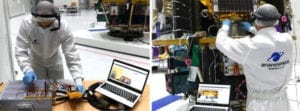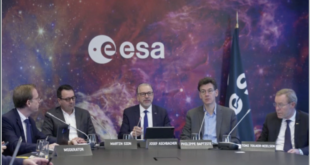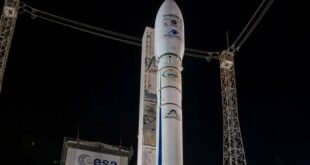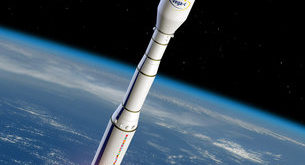
The launch campaign has resumed for Arianespace’s next mission, which will be the proof-of-concept flight with the Vega launcher’s “ride-share” configuration – known as the Small Spacecraft Mission Service (SSMS).
Scheduled for the middle of this month from the Spaceport in French Guiana, it will loft 53 micro- and nanosatellites for the benefit of 21 customers, deploying these payloads into Sun-Synchronous orbit.
For the mission, designated Flight VV16 in Arianespace’s launcher family numbering system, Vega will carry seven microsatellites weighing from 15 kg. to 150 kg., along with 46 smaller CubeSats. These spacecraft are to serve various applications, including Earth observation, telecommunications, science, technology and education.
The maiden flight for Europe’s SSMS
Avio, the Italian company that is production prime contractor for Vega launch vehicles, also developed the SSMS ride-share concept. Design authority for the multi-payload dispenser system is SAB Aerospace, an independent Italian SME (small/medium enterprise).
The SSMS dispenser is composed of modular components that are assembled as needed to serve as the interface with grouped payloads composed of microsatellites and CubeSats. Capable of accepting a full range of payload combinations, the SSMS configuration has been designed to be as responsive as possible in meeting the launch service market’s needs for both institutional and commercial customers.
Launch team members arrive from Europe
With the decision to restart operational activities at the Spaceport, a team of some 70 people – led by engineers and technicians from Avio, and including personnel from other companies – was flown aboard a chartered jetliner from Europe to French Guiana.
After arriving at Félix Eboué Airport near the capital city of Cayenne, the team members underwent a quarantine period before being authorized to work at the launch site.
“We are delighted to have resumed operations,” said Thierry Wilmart, who heads the Missions & Customers Department at Arianespace. “Protective measures relating to COVID-19 have been taken throughout the launch site’s facilities, and mission personnel have received instructions on respecting the sanitary guidelines.”
Wilmart noted that among the first activities was an evaluation of using smart glasses during payload preparation activities with several of the spacecraft passengers on Flight VV16. “The results are very positive, and this efficient means of being connected enables customers to remotely monitor operations conducted by Arianespace personnel on their satellites.”
This announcement was made on 1 June 2020.





